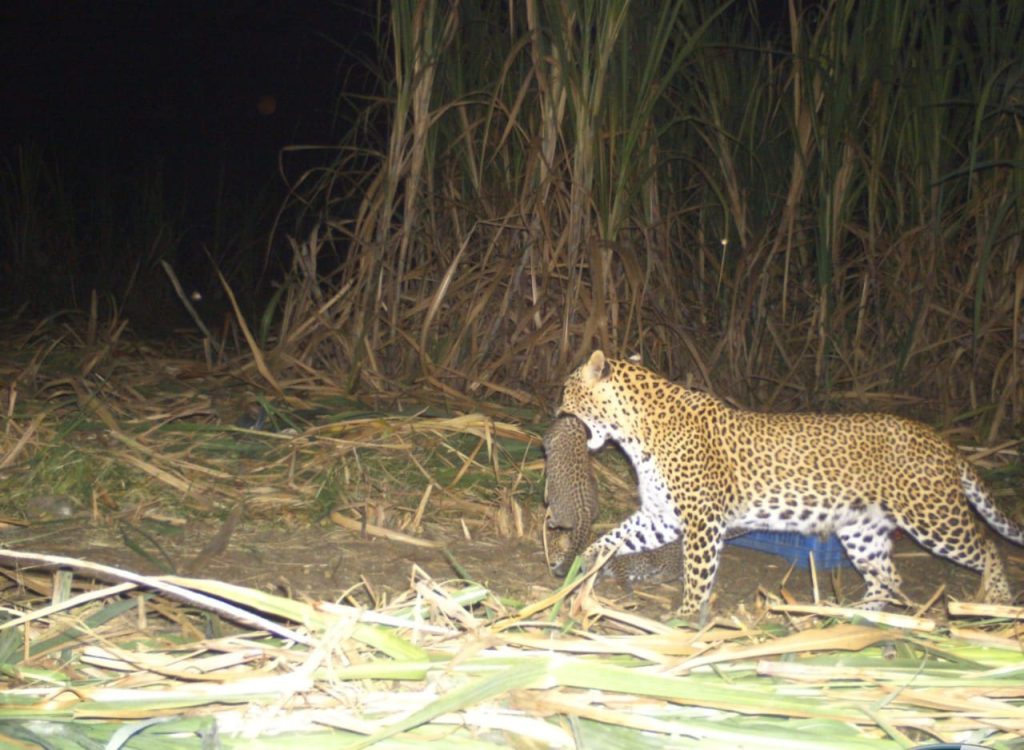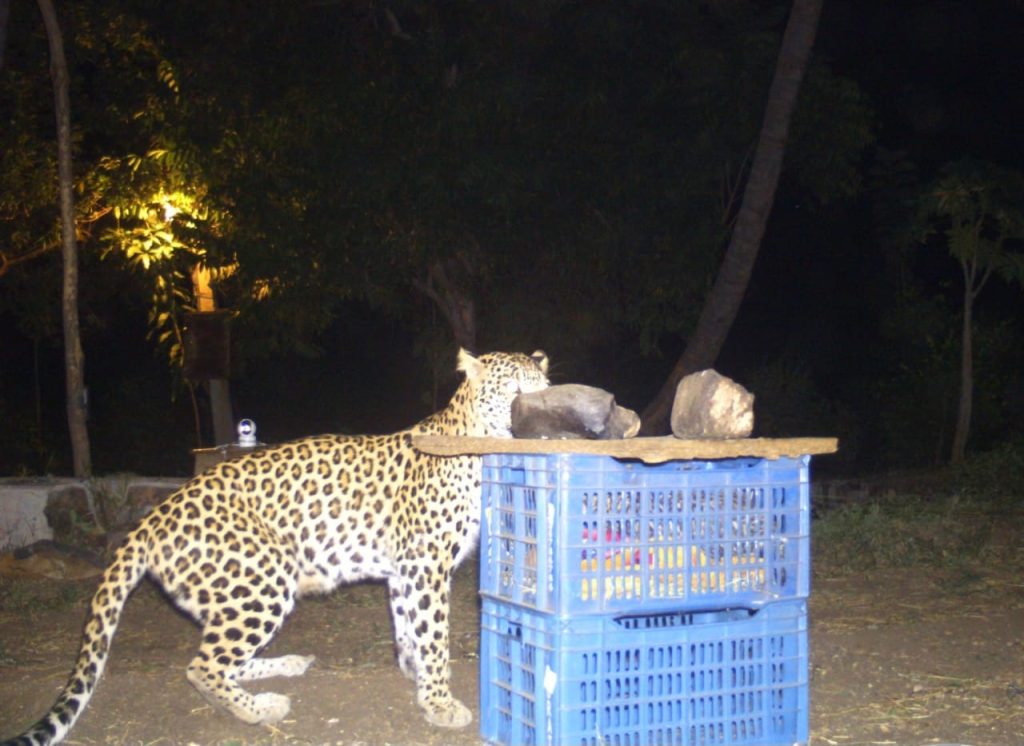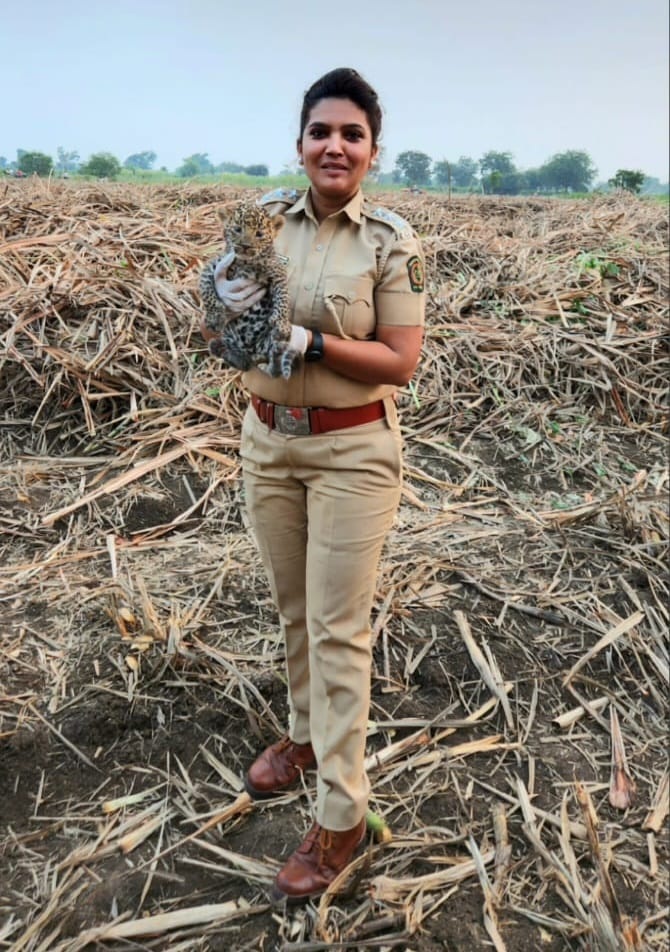Though the Chalisgaon range in Jalgaon, Maharashtra, has scrub type of forest, leopards do not always require a dense forest to survive. As the animals thrive in sugarcane fields, there is human-leopard interface, which sometimes results in acute conflict, writes Deepanwita Gita Niyogi

Shital Nagrale, an officer in the Chalisgaon range of Jalgaon forest division, has helped reunite many abandoned leopard cubs with their mothers. Nagrale, who underwent training from 2016 to 2018 before joining the Maharashtra forest department, was posted in the Dhule forest division for almost two years. Over a phone call, she spoke about her affinity with nature and a degree in environmental science which helps her in her job profile.
Nagrale’s current posting in Chalisgaon, however, offers challenges. The human-leopard conflict is high in the area due to the dominance of sugarcane fields.

“Chalisgaon is fully irrigated. As there is not much disturbance here apart from sugarcane cultivation, it is a safe place for mating and breeding of leopards, thereby increasing the population of the animals,” said Nagrale, whose area of operation currently covers 15,000 hectares stretched over four talukas.
The officer added that for leopards roaming in the Chalisgaon range, the sugarcane fields offer the same kind of cover as a jungle. To find out the location of leopards, the forest department takes the help of trap cameras. At present, there are 25-30 leopards in
Chalisgaon.
Tracing human-leopard conflict
Though the Chalisgaon range has scrub type of forest, leopards do not always require a dense forest to survive. As the animals thrive in sugarcane fields surrounded by human habitation, there is human-leopard interface which sometimes results in acute conflict.
Nagrale said that around the year 2018, a male leopard made nine human kills in the Chalisgaon range. “Apart from sugarcane cultivation, people here keep many domestic animals and own poultry farms which attract leopards. Sometimes, the only mode of local transportation is bullock carts. Thus, many people feel afraid, especially after dark. There is an abundance of banana plantations too.”
In the Chalisgaon region, both men and women work in the sugarcane fields. However, women often squat outside for defecation due to cultural norms which makes them vulnerable to possible leopard attacks. It is better to stand to minimise the chances of attacks.

Nagrale pointed out that the forest department carries out awareness drives in the villages. “I tell people to move about in groups, especially while watering fields at night, play songs on mobile phones and carry sticks for protection.” She admitted that women get aggressive at times, taking into consideration the safety of the male members of their families.
At the receiving end
As leopards are living amidst human beings in Chalisgaon, they too are paying a heavy price. Sometimes, during crop cutting, mothers are forced to abandon their cubs. In such cases, the cubs are reunited with their
mothers. “So far, 13 cubs have been reunited with mothers from September 2021 till 2023. For this, mainly infrared cameras are used,” Nagrale, posted here since September 2021, said.
“The cubs reside in sugarcane fields with mothers. When the crop is cut, mothers get disturbed, pick up one cub and move away leaving behind the rest of the litter. At that time, farmers call us for help. When I visit fields, I try to make people understand as they at times want the cubs to be caged,” Nagrale added.
Sometimes, the animals too die. According to departmental data, three leopards died after falling into a well, one died in an accident and two cubs died after being separated from their mother from 2020 to 2023. During this time, there were three human injuries.
In the year 2022-2023, the compensation given to people stood at Rs 68 lakh for human injuries, cattle killed by leopards and crop damaged by wild animals. Of this, about Rs 30 lakh had to be dispensed to people for cattle lifting.
Sudarshan Shisav of the Maharashtra forest department said the cubs are born in the sugarcane fields. “At times, farmers become aggressive and demand that the animals should be taken away elsewhere. But some of them do cooperate with the department.”
Apart from awareness campaigns, there is a dedicated team which tracks the animals. Shisav pointed out that besides sugarcane, the growth of the Prosopis juliflora species is also responsible for the conflict. “Over cropping has led to soil infertility and the abundance in Prosopis.”
Mumbai-based Nikit Surve, who works with the Wildlife Conservation Society, said that humans perceive leopards to be staying in forests. So, when they find them in fields, the perspective often changes.
Leopards are highly territorial animals. Sometimes, even after being released in different areas, they try to come back. “The interface of the human-animal conflict increases when there are agricultural fields,” Surve added.
According to wildlife researcher, Dipak Sawant, there has been a decrease in the natural habitat of leopards even though the animals adjust themselves well in a disturbed forest. Sawant said the reduction in the wild prey population and the conversion of fallow lands into agricultural ones has increased the presence of leopards in human-dominated areas. The need of the hour is to work together and engage as much as possible with the public.










